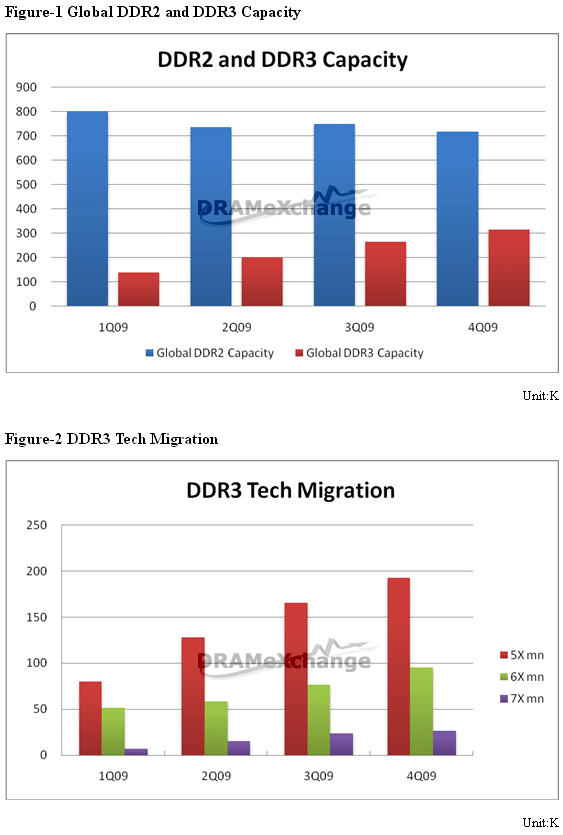Popular Keywords
- About Us
-
Research Report
Research Directory
Semiconductors
LED
Consumer Electronics
Emerging Technologies
- Membership
- Price Trends
- Press Center
- News
- Events
- Contact Us
Taipei,July 1st 2009----- The June contract price did not fluctuate since some contract deals between PC OEMs and DRAM vendors are conducted either in monthly basis or quarterly basis. DRAMeXchange believes that DDR3 contract price in July will increase 5%~10% due to the aggressive CULV promotion and new contract deal negotiation in July.
As for spot market, given the stable range between US$1.5~$1.7 of DDR3 1Gb chip with 50% premium compared to DDR2 1Gb chip, DDR2 1Gb chip price has dropped to US$1.00 from US$1.34 in May.Says DRAMeXchange.
From the supply side perspective, DRAM vendors adopted the “Capacity Cut” strategy through the difficult period in 2H’08 given the frozen demand and global financial crisis. Qimonda was filed bankruptcy early this year while ProMOS maintained the minimum operation. With the improved economy, DRAM vendors gradually enhance production. DDR3 wafer-in portion is expected to be up to 30% in Q4’09 from 15% in Q1’09 while Korean and Japanese vendors demonstrate the great ambition on the DDR3 migration. Nanya and Inotera are the only capable Taiwanese vendors that can dedicate to DDR3 production. However, the DDR3 portion of Nanya and Inotera is below 10%, while rest 90% is occupied by Korean and Japanese vendors. (Figure-1)
DRAM vendors were suffering from the big financial trough in the downturn economy crisis that this circumstance resulted in the obvious CAPEX gap especially in DDR3 migration. This situation is way different from what DRAM vendors devoted CAPEX in 70nm and 65nm technology. As for Korean vendors, they do aggressively conduct not only DDR3 migration but also 50nm technology adoption.
It is expected that at least 70% DDR3 chips will be produced with 50m technology. 65nm remains current mainstream technology for Japanese vendors that they do contend competitiveness if the total chip amount can be increased via “Die Shrink” process. Although Qimonda’s 70nm technology is still adopted to produce DDR3, Micron’s 68nm and 50nm technology will be mainly applied in 2H’09. This technology migration will give Nanya and Inotera some credit to compete with Korean/Japanese vendors. Meanwhile, Powerchip and Rexchip are both qualified for mass production. According to DRAMeXchange.(Figure-2)

Subject
Related Articles
Related Reports
